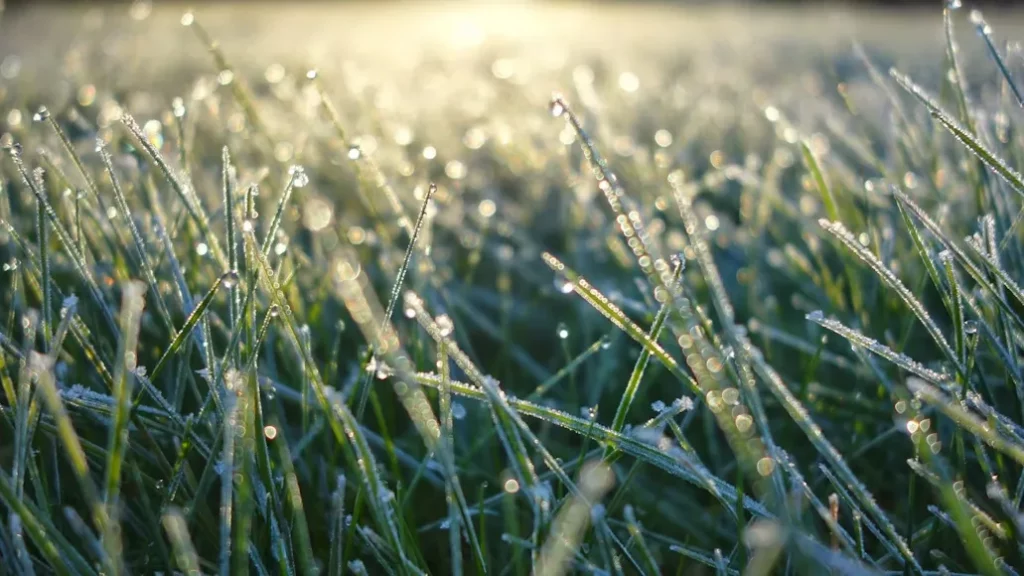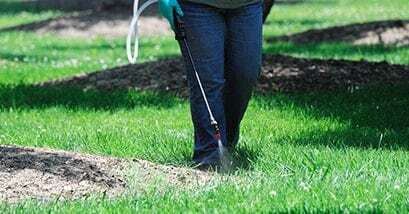When Do Warm-Season Grasses Go Dormant in North Carolina?
For Bermuda, Zoysia, Centipede and St. Augustine lawns, the fall season means a stop in grass growth. Understanding this period, known as “dormancy,” can help you make the best decisions for your yard’s health.
Let’s explore how to recognize lawn dormancy vs. lawn damage, when warm-season grasses go dormant and the best care practices to prepare your yard for the spring growing season.
Understanding Warm-Season Grass Dormancy

Dormancy is a hibernation-like state triggered by frost, during which grass stops growing to conserve energy. Unlike cold damage, dormancy is a natural process and doesn’t indicate a problem:
- Dormant Grass: Displays a uniform straw-brown color and has a crisp texture. Despite appearing dry, it remains firmly rooted in the ground, with no areas easily pulling up.
- Damaged or Dead Grass: Damaged grass appears patchy and may feel either: a) dry and brittle or b) soft and spongy from cold damage or disease. Dead grass pulls up easily or often crumbles when touched.
If you’re unsure whether your lawn is dormant or damaged, Barefoot Lawn Care can provide expert guidance on how you should proceed.
Typical Dormancy Timelines for Warm-Season Lawns
Warm-season grasses in North Carolina enter dormancy at different times, depending on their type and regional factors. Lawns in the Piedmont region typically go dormant earlier due to cooler conditions, while those in coastal areas may experience delays because of milder temperatures.
St. Augustine Grass

Less common in North Carolina, St. Augustine is particularly sensitive to frost and is typically the first to go dormant, around mid-October.
Bermuda Grass

A popular choice for its dense, durable turf, Bermuda grass follows closely behind, generally entering dormancy in late October to early November.
Zoysia Grass

Known for its drought resistance and durability, Zoysia stays green longer than Bermuda, often going dormant in early to mid-November.
Centipede Grass

This low-maintenance variety is common in the Piedmont and tends to begin dormancy last, typically in mid to late November.
Preparing Dormant Warm-Season Grasses for Spring
While your warm-season grass is dormant, it shouldn’t be completely neglected. Here are some care tips to ensure it receives the right attention during dormancy and thrives in the spring:
Watering
During Dormancy
Dormant grass requires less water, but it’s still important to keep the soil slightly moist to prevent root damage. Avoid over-watering, as this can also harm the grass.
Once Grass Starts Growing
Resume your regular watering practices.
Mowing
During Dormancy
As the grass enters dormancy, reduce mowing frequency. Once the grass is fully dormant, it may not need mowing at all.
Once Grass Starts Growing
Resume your regular mowing practices.
Fertilization
During Dormancy
Stop fertilizing once dormancy begins. Fertilizing during dormancy can stress the grass, potentially causing it to break dormancy early and disrupt its natural growth cycle.
Once Grass Starts Growing
Apply a balanced fertilizer specifically tailored to your lawn type.
Weed Control
During Dormancy
Dormancy is an ideal time to manage weeds. Pre-emergent weed control in the fall is ideal for preventing winter weeds, and a late winter or early spring application can stop weeds from emerging later in the season.
Once Grass Starts Growing
Continue to monitor your lawn for weed control effectiveness.
Additionally, core aeration in the spring can alleviate soil compaction, allowing air and nutrients to reach the roots more effectively.
Get Your Spring Lawn Stronger With Barefoot Lawn Care
Dormancy is a natural reset for your lawn—but it still matters how you handle it. To prepare your grass for the best spring comeback possible, trust Barefoot Lawn Care. Our team understands the unique needs of your lawn and offers custom support to ensure it’s at its best.
Call our Raleigh or Wilmington offices or request a quote to schedule your free lawn analysis!
